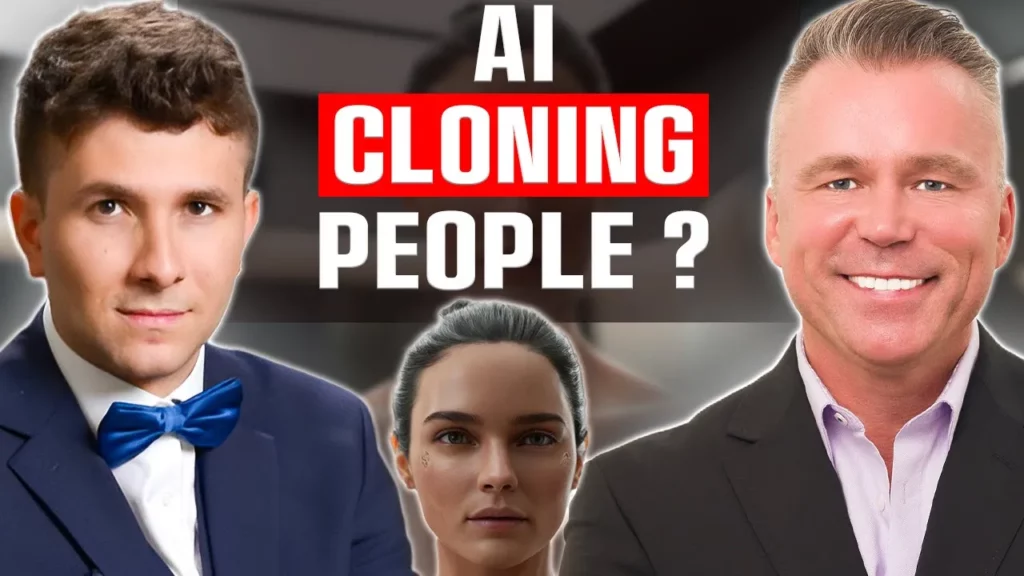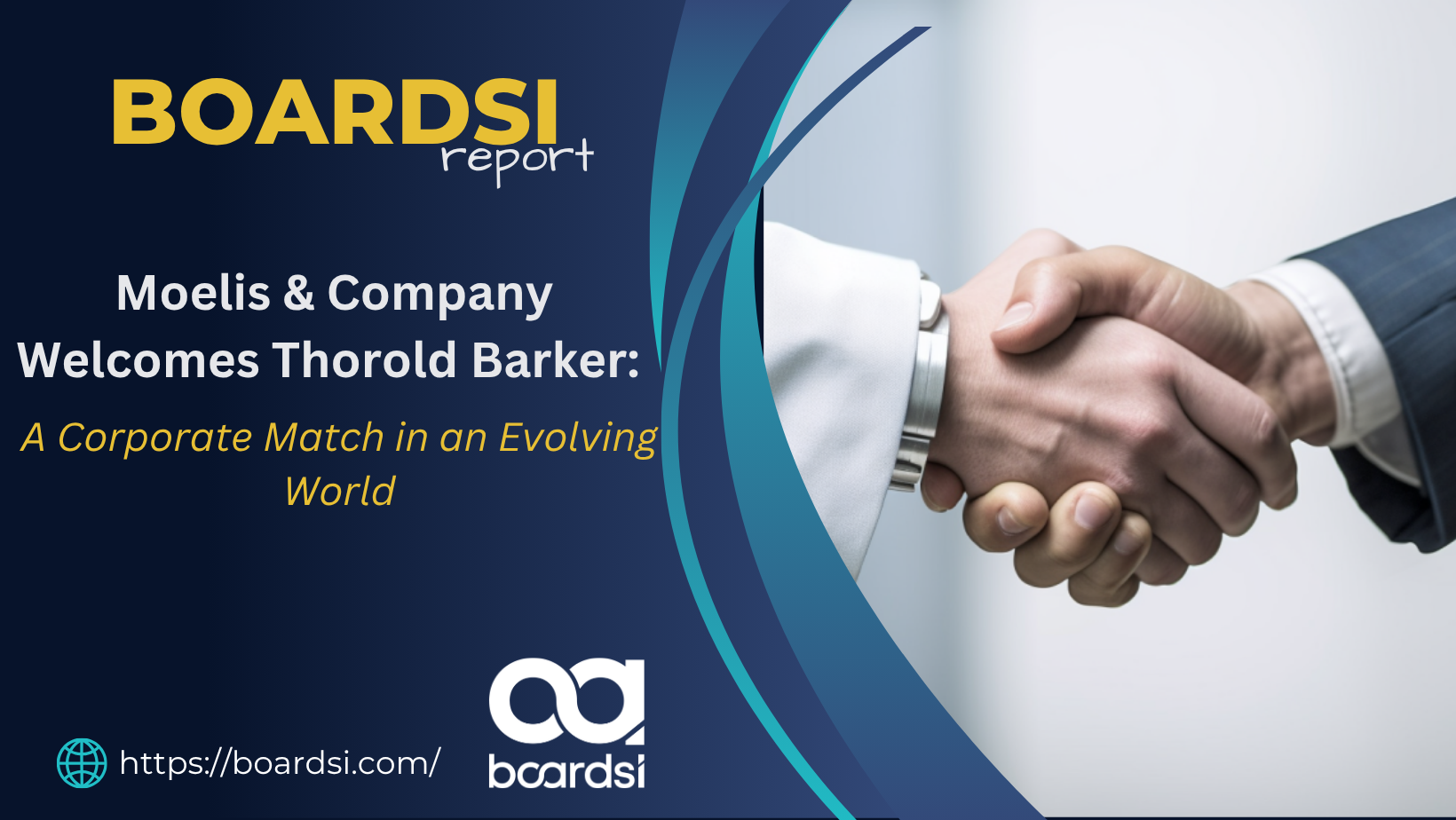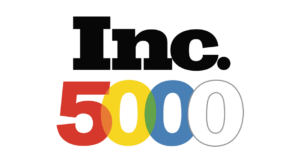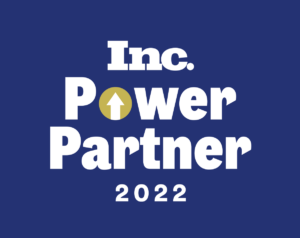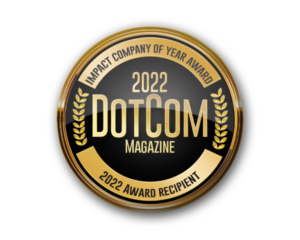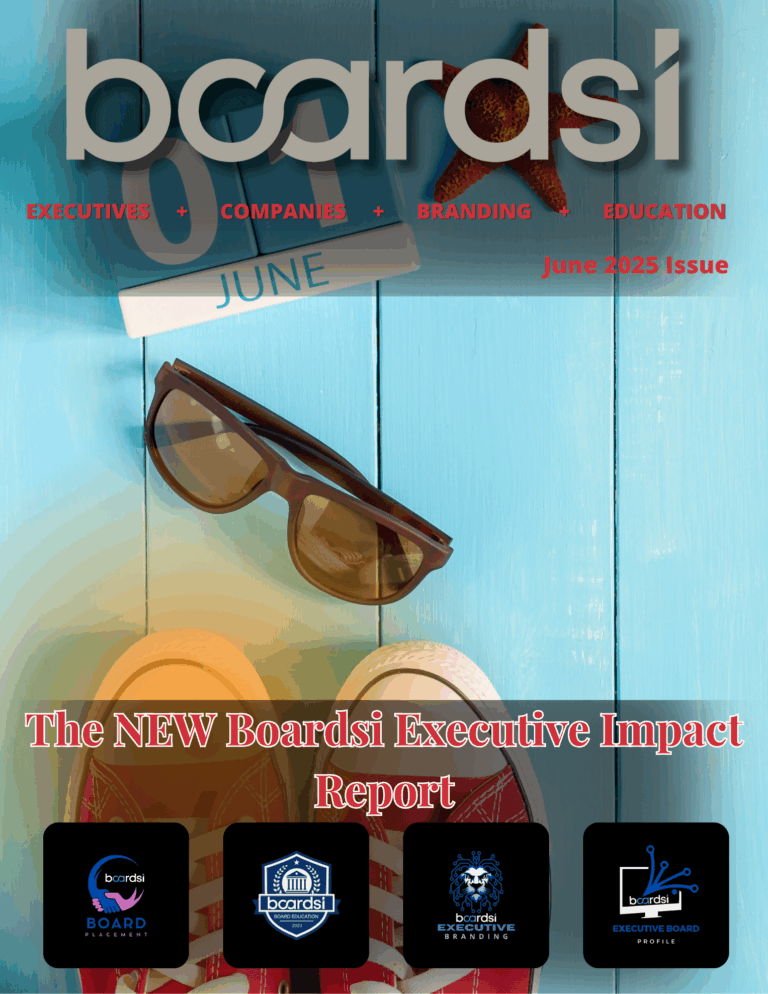In the latest episode of Leadership Talks, we had the pleasure of hosting Ryaan Sayegh, the co-founder and CTO of Hollo AI. Ryaan is a trailblazer in the field of artificial intelligence, and his work is transforming industries across the globe. From software development to traffic management systems, AI is making waves, and Ryaan is at the forefront of this revolution.
A Glimpse into Hollo AI
Hollo AI is a groundbreaking technology designed to clone people—not in a sci-fi way, but by creating a “Holo Twin” that replicates your knowledge, voice, and image. As Ryaan explains, “Your Holo Twin is meant to represent you front-facing others, either through a chat bot or a call bot, which is our newest tech invention.” This technology is poised to revolutionize how we interact with digital content and verify information.
The Entrepreneurial Journey
Ryaan’s entrepreneurial journey began at the young age of 17 with the founding of Grade Hero, a company that connected high-achieving students with those needing academic assistance. This venture quickly gained traction, growing from 30 clients to over 1,000 in just a few years. His passion for innovation didn’t stop there. He went on to establish SKU, a software development company that built Hollo AI and other significant projects like a traffic light management system for the city of San Francisco.
Overcoming Challenges
Starting a business is never easy, and Ryaan faced his share of challenges. “The biggest challenge was balancing my studies with growing a business that was picking up traction very quickly,” he recalls. His advice to aspiring entrepreneurs? “Focus on one niche. When you get an idea, don’t let it be too big in the beginning. Focus on one niche and grab those customers, then build on that.”
The Future of AI
Ryaan is optimistic about the future of AI. “I don’t think AI will replace people, but it will make our lives way easier,” he says. Hollo AI aims to be the “blue check mark of AI,” ensuring that any content created by your Holo Twin is verified and authentic. This is particularly crucial in an age where deep fakes are becoming increasingly sophisticated and prevalent. “If the information doesn’t come from your Holo Twin, it’s not your official twin,” Ryaan emphasizes. This level of verification is essential for maintaining trust and authenticity in digital interactions.
Global Ambitions
Hollo AI is not just limited to the U.S. market; it has international aspirations. “We’re deploying it on all app stores and Google Play stores, and the twins speak 29 languages,” Ryaan shares. This global reach ensures that users from different parts of the world can benefit from the technology, making it a truly universal tool.
A Quote to Inspire
One of the standout moments from the interview was when Ryaan said, “Your idea is the best idea in the world, no matter what. I’m really looking forward to seeing how the market responds to it.” This quote encapsulates the passion and optimism that drive Ryaan and his team at Hollo AI.
Final Thoughts
Ryaan Sayegh’s journey is a testament to the power of innovation and the impact of artificial intelligence on our lives. From his early entrepreneurial ventures to his current role at Hollo AI, Ryaan continues to push the boundaries of what’s possible. For aspiring entrepreneurs and tech enthusiasts, his story is a source of inspiration and a reminder that with the right mindset and dedication, anything is achievable.
Join us for this enlightening episode of Leadership Talks and get a front-row seat to the future of AI and entrepreneurship. Don’t forget to subscribe and hit the bell icon for more inspiring interviews and tech insights!
By diving into the world of AI with Ryaan Sayegh, we gain valuable insights into the future of technology and the entrepreneurial spirit that drives innovation. Whether you’re a tech enthusiast or an aspiring entrepreneur, this episode of Leadership Talks is packed with wisdom and inspiration. Tune in and be part of the conversation shaping the future.
Welcome to another episode of leadership talks where we dive into the journeys and insights of today’s most inspiring leaders.
and in this case, very innovation leaders. I’m your host, Martin Rowinski CEO of Boardsi And today we have an exceptional guest joining us. Ryan Sayegh I hope I didn’t mess that up, is an entrepreneur at the cutting edge of technology, startups, and one of my favorite subjects, artificial intelligence. As the co -founder and CTO of Hollo.AI,
And also founder and CEO of both skew and great hero. Ryan has a diverse skillset that spans software development, digital marketing and innovative software solutions. His passion lies not only in creating his own digital masterpieces, but also in consulting and elevating others in their tech journeys. So Ryan, welcome to the show.
Ryaan Sayegh (01:38.672)
Thank you, Martin. It’s a pleasure to be here. Congrats on the podcast. I think this is podcast number two, if I’m not mistaken.
Martin Rowinski (01:42.04)
That’s awesome. Yeah.
It’s a second season and going, yes sir. Yeah, so we got…
Ryaan Sayegh (01:49.57)
All right. All right. Thank you for having me.
Martin Rowinski (01:55.916)
You know, we had a chance to meet, I think it’s almost been a year now, right?
Ryaan Sayegh (02:00.368)
Yeah, it’s coming up on a year.
Martin Rowinski (02:02.574)
It’s coming up on a year, yeah. And when I met you, guys were kind of just seemed like getting it off the ground. It was functioning. You did a nice demo. I’m only going to guess you’re ready to launch or you have launched HoloAI. Can you share some of the most exciting innovations you’ve worked on at HoloAI and how they are transforming the industry and maybe even
for people that have never heard of hollow, let them know what it is.
Ryaan Sayegh (02:34.808)
Absolutely. hollow is a technology that was created to clone people. And when I say clone people, I don’t mean it in this sci -fi star Trek way. I mean, it’s a copy of, a hollow twin essentially is a copy of your knowledge, voice, and image and personality, which ties into the three. So, but mainly image, knowledge and voice and
Your Holo Twin is meant to represent you front -facing others, either through a chat bot, which we had showed you at the time, and now through a call bot, which is our newest tech invention. Holo started a year ago, a year and a bit more, year and a bit, and it was co -founded by me and Rex Wong, the CEO. It’s an exciting time for the world. I mean, everyone.
You know, 2024 was AI year or is still AI year every day a new model here in, know, so it’s so quick. And I think that we’re coming up to, you know, to a level where AI, I don’t think will replace people, but it will make our lives way easier.
Martin Rowinski (03:34.04)
You
Martin Rowinski (03:52.13)
Definitely. And like you said, mean, yeah, replace people, highly doubt it. Will it make things easier? Sure. I mean, you know, you can feed it knowledge. You can feel feed the image. Obviously you can animate the image. You can fake the voice. I mean, we’ve seen crazy deep fakes out there and I know you guys are verifying the person that so they’re aware of it. So if their image is being used, they can license that AI clone out. So
Ryaan Sayegh (04:17.829)
Alright.
Martin Rowinski (04:22.234)
I think that’s genius and at least it’s verified that that’s the person versus like I said, the deep fakes that are out there.
Ryaan Sayegh (04:29.976)
Absolutely. I mean, we have a goal of being the blue check mark of AI. So if the information doesn’t come from your Holo Twin, it’s not your official twin, you know, and we don’t create anything on your behalf. You have full control of your twin and you have your own access to create your own content. We don’t do anything with it. So it’s fully you. We don’t even see your data.
Martin Rowinski (04:53.166)
That’s awesome. And I also know you already mentioned one person, Rex, the CEO and your co -founder. And just in between the two of you, and I know you have other people on your team, mean, looking at the background of your executive team and who’s backing this is pretty amazing. A lot of experience in media, Dave TV, 8 Asia Media.
Ryaan Sayegh (05:14.938)
Thank you.
Martin Rowinski (05:22.414)
What else, guys? Yeah, yeah, thank you, yes. Yep.
Ryaan Sayegh (05:22.576)
and Google AdSense, which is now Google Ads. So that was the only company acquired in, it got acquired in 03 by Google before it went public. That was the only company they ever acquired before they went public. So yeah.
Martin Rowinski (05:37.218)
Wow, that’s awesome. And then I know you also have Steven on your team who brings background from Sonya Entertainment and Warner Brothers. So, I mean.
Ryaan Sayegh (05:48.272)
Yep, Steven Mendelson, our CRO and we have Sylvia Hernandez. She’s our chief creator officer. She’s been in the business 20 plus years now between TV and TikTok stars and Nickelodeon stars and all influencers. So yeah, we make a pretty good team of four.
Martin Rowinski (06:04.642)
Yeah, so definitely. And when we originally met, you know, I was trying to figure out after I left, I was like, you know, it’s a cool product, it’d be fun. And, you know, I played around with my digital twin and, but I was trying to figure out how can it be used? And since then, I think you guys have come up with great ideas, obviously licensing. if you have like a NFL player or, like you said, some kind of an influencer,
To understand that a little bit more for my sake and maybe anybody else that’s listening, how will the licensing work as far as if a company wants to use somebody’s, my image, and they wanna do a 30 second commercial, how does that, do I get to approve it?
Ryaan Sayegh (06:52.644)
Yeah. Yeah. So, you approve, so, know, you approve or disapprove and you set your own rates and yeah, that’s on the, have two angles. have a B2B angle and a B2C angle, but yeah, basically you approve the content. Like, do I want this to be created? And you know, let’s say, you know, a lot of people say, the company can create it without me, which they could write. There’s so many tools out there where they don’t need you to create your content, but if it’s not approved by you, if it’s not from your hollow, you know,
check mark, then it won’t be verified. And then we create a tag to verify content that comes from you. So for example, audio watermark signatures and that’s in the audio. So, you know, we’re able to see is this, was this really by Martin’s AI or not? And image as well and video and among other stuff.
Martin Rowinski (07:42.904)
That’s awesome. All right. Well, that’s good progress there. So let me, yeah.
Ryaan Sayegh (07:47.18)
Right. mean, speaking on the point of applications, even, mean, just for example, on an angle with, you know, Boardsi for example, did I pronounce that correctly? Yeah. So for example, I know that you guys mainly headhunt executives or find board members for companies of that need. So, so they could, you know, chat, engage with that person’s chat bot or call bot, get a feel of them before say, okay, I want to interview.
Martin Rowinski (07:57.346)
Yep. Yep. You’re good.
Ryaan Sayegh (08:15.408)
The traditional way was show me their CV, show me their credentials and let them shoot an introduction video. But now they could spend, you know, maybe time chatting with the bot of the person. Okay, I know this person is, you know, that could be an application.
Martin Rowinski (08:31.054)
No, 100%. I mean, we can feed it quite a bit of data just to learn the basics about that person. And like you said, you’re making a picture come to live and then the voice, if they got the voice cloned, which I know it doesn’t take long to do with your software. I mean, that puts two and two together before you actually go face to face and do a deep dive interview. At least you get to know the person a little bit. Yeah.
Ryaan Sayegh (08:50.062)
Yeah.
Ryaan Sayegh (08:54.968)
Absolutely, yeah, and break the barrier, you know, yeah.
Martin Rowinski (08:58.474)
Awesome. So prior to Hollow, know we had you, CEO for SKU and Great Hero. What were some of the biggest challenges you faced in the startup of the ecosystem? And how did you overcome to achieve success in those?
Ryaan Sayegh (09:06.8)
Correct.
Ryaan Sayegh (09:17.936)
So, so Great Hero was a company I started at 17. I was my first year of university and it’s academic services. So basically where the connection between students who are really excelling and really smart and students who are a bit on the lazier end and don’t want to do the work. And then we’d be the connection of the two. Great Hero started, you know, at 17. We had maybe that year like
Martin Rowinski (09:22.872)
you
Ryaan Sayegh (09:47.344)
maybe like 30, 40 clients. then two years later, we were at like 1000 clients. And then another year we doubled and tripled. So, Great Hero was exciting because it was like, it was all a WhatsApp business, but it really flew off. And then I created a software element to it. So that was Great Hero. No AI there, but pure commerce, if you want to say, during my university years.
You know, we do CVs for students, do cover letters, we do a lot of academic services and it really grew. mean, most university students, if any, are hearing this, they probably heard of Grade Hero. So, yeah.
Martin Rowinski (10:27.682)
That’s awesome. And what about skew?
Ryaan Sayegh (10:30.576)
Sq is my software development company. Sq actually built Holo. So Sq is my team, know, software development team, we’re a team of 13. They’re like my second family, every one of them. And they’ve been with me for years now. And we built software for others. I built software for the city of San Francisco, traffic light management system, where they could, you know, control the lights from their…
remotely and count cars and stuff like that. And we also developed other projects like for universities or schools. And then that team built Holo. So yeah, and that team is still obviously running. There’s a team maintaining Holo and we do projects for clients. AI mainly.
Martin Rowinski (11:17.166)
Awesome. Yeah, no, that’s great. So overall, you started obviously at, you said 17 at Great Hero. Where did your passion for entrepreneurship come from?
Ryaan Sayegh (11:30.602)
And you know, my family, both generations, my grandparents and my parents and my grandparents on both sides. This is third generation entrepreneurial. They both went the entrepreneurial track. you know, I always like to hustle or think or put things together, you know, whether, you know, in high school I used to sell like bracelets and stuff.
I always like to, yeah, I always like to, I love entrepreneurship, innovation and ideas. You know, if I have an idea and I think it’s the best thing in the world.
Martin Rowinski (12:12.59)
As you should, as you should. And when did you get into IT, programming, coding? Where did that passion come from?
Ryaan Sayegh (12:14.873)
Yeah.
Ryaan Sayegh (12:23.824)
So in university, I was a bit lost because when I opened Great Hero, you your focus is split. Like you want to study or you want to grow something that’s doing so well. Because Great Hero picked up traction very quick. We started in like two countries, then we’re like 10, 20, every month, a few countries. So I was a bit lost and…
I actually switched my majors twice. I did civil engineering, then I did industrial engineering for half a year and half a year. And then I really liked the idea of, I’d like to be in a domain where I can be anywhere in the world and I could be innovating and it can be running itself or, you know, and I saw all the, you know, I got inspired all the big ideas in the world were software based. So, and then I studied.
Math and Computer Science and with a double major in Economics and a minor in Philosophy. But the main focus was Math and Computer Science. I love an idea where you can be anywhere and it can work, know, an innovative idea. I don’t like to be like in a place and if I’m not there, it’s not working, you know.
Martin Rowinski (13:31.231)
Exactly.
Martin Rowinski (13:37.29)
I agree. A freedom of traveling and still getting, pardon my French, shit done.
Ryaan Sayegh (13:43.632)
Yeah, that’s true. That’s true. you see, like, for example, when I was young, I think what doesn’t make me the most successful, right? And then the top 100, the companies on the US stock market, like 68 % are tech companies. So I’m like, there’s something in this world, you know, we’re going to and where like my schooling was, like, software wasn’t so big in my high school years.
Martin Rowinski (13:44.983)
Yeah
Ryaan Sayegh (14:10.656)
You barely take one computer class. You’re not exposed to it.
Martin Rowinski (14:15.778)
Yeah. And I know you’re you weren’t born and raised in America, correct?
Ryaan Sayegh (14:23.216)
No, born in the States. Yeah, I was born in the States. Yeah, I just raised outside the States and then I moved back. was 18. Yeah.
Martin Rowinski (14:25.676)
You were born in the States. Okay. Okay.
That’s what it was. Yeah, I couldn’t remember that story. So I knew you lived outside of the States, but you were born here.
Ryaan Sayegh (14:38.512)
Yeah, but when I arrived at 18, it’s like a dog went off his leash. I was so hungry for America. I felt that America is that, like when I left the airport, I saw like a restaurant and it’s like 10 times the size of the restaurants I’m used to. then a few blocks, I see another chain for this restaurant. I’m like, well, what’s this country, I was shocked from.
Martin Rowinski (14:50.626)
that.
Ryaan Sayegh (15:06.48)
airport until I got home I saw like 20 of it was like jack -in -the -box and like there is something about this country where you can be so big so I’m lucky to be in the States for real
Martin Rowinski (15:15.202)
Yeah, the American dream.
Yeah, the American dream. Main reason I came to this country for the American dream. So yeah, the freedom is there for sure. Can you provide, ahead. So I was born in Poland. Most people know this by now, but I was born in Poland. I came to this country when I was 10. So I’ve been here now 43 years. Yeah, long time. Yeah, it’s home. It’s home for sure.
Ryaan Sayegh (15:25.946)
Night.
Ryaan Sayegh (15:29.584)
How long ago were you?
Ryaan Sayegh (15:41.146)
Wow.
Amazing. That’s amazing. Me too. Yeah, I feel so too.
Martin Rowinski (15:48.526)
Can you provide some insights or advice for aspiring entrepreneurs who are looking to break into the tech industry and make significant impact?
Ryaan Sayegh (16:00.72)
I think that so before one enters the tech industry, there’s this stereotype like you have to be so technical to make it in tech or you need to have a deep understanding of like how transformers work and how LLMs work. And these days it’s really not true. I mean, if you look at the companies building deep tech, mean, maybe it’s max 20, you know, that are really building true deep tech and then all the other companies are building on top of that.
So if you want to enter the tech industry, don’t be scared if you’re not technical or, know, because there’s room for people who are idea makers or people room for people who are designers. There there’s room for all types of people. You don’t need to know code or, I mean, it’s a plus obviously, but it’s not like a requirement. Like I can’t know tech because I don’t know how LLMs work. It’s not like that anymore. And I think.
My main advice is focus on one niche. When you get an idea, don’t let it be too big in the beginning. Focus on one niche and grab those customers and then build on that. But when you do two, three stuff at the same time, it’s going to be very hard to build.
Martin Rowinski (17:12.204)
Yeah, it can get a little confusing and then you can lose your direction, right?
Ryaan Sayegh (17:17.208)
Correct, yeah, and then people won’t relate to you. So stick to what your number one idea is and then grow and iterate, no problem. But just your first go to market, let it be that one idea that you love and then grow it. It could be a feature. It could be a feature.
Martin Rowinski (17:35.03)
Yeah, absolutely. What? Before you moved back to states, where were you living at? That’s right. See, now I remember we talked a little bit about this. So is let’s get back to hollow AI for a second is hollow AI fully live now or is it still waiting list?
Ryaan Sayegh (17:43.855)
Lebanon.
Ryaan Sayegh (17:47.962)
Right.
Ryaan Sayegh (17:58.532)
We’re set to be live next month. Yeah. We’re set to be live next month for the public, our chat bot, our call bot, and it’s going to be a mobile app. So you download the app and in one and a half minutes, your twin is live and you’re talking to yourself. And then you can grow your link page. You’re going to have your own website, like where your twin lives, where people can engage with you on your website and you can edit. It’s like, you see what people are talking to you about and you can control everything related to your twin on that.
the Holo app. So it’s like your mini twin manager.
Martin Rowinski (18:30.062)
Awesome. Yeah, that’s awesome. And so that’s 30 days out. Trying to think what else I was gonna ask you. So how much stress is gonna come off of you when that’s live? Or is it gonna create more stress?
Ryaan Sayegh (18:45.616)
A lot. No, a lot because as an entrepreneur, your idea, you think it’s the best idea in the world, no matter what. And I’m waiting, I’m really like looking forward to see what the market is gonna respond to it. How are people gonna react to it? Is it too ahead of its time? Like I don’t want to turn off myself now or are people ready for this?
where we met actually, and I would say 70, 80 % were good reactions, but 20 % were people like, okay, like, delete this right now. Right. I mean, it’s your name in the image and likeness, the three most important things. So I’m really excited for the market. mean, it’s a long time coming.
Martin Rowinski (19:19.694)
Delete.
Martin Rowinski (19:33.11)
Yeah, yeah, yeah, you’ve been working at it. Personal question, if you were to travel and now you got freedom to travel, you said you can work from anywhere. Where is a place you haven’t been to where you would like to go?
Ryaan Sayegh (19:51.918)
That’s a good question.
Ryaan Sayegh (19:58.0)
Honestly I would like to go to China. There’s a part of me would really like to see China. And yeah, I would say probably China or a bit maybe towards Ethiopia. Yeah, those two.
Martin Rowinski (20:11.434)
Okay. And have you traveled anywhere else?
Ryaan Sayegh (20:16.654)
Yeah, yeah, I’ve been to quite a few countries. A lot of Europe and Romania, Estonia and Bulgaria and Greece. I’ve been around in Europe, Prague, Vienna, Salzburg, London, Scotland.
Martin Rowinski (20:34.786)
Wow. Okay. So you have done some traveling. So now the reverse question out of the places you have been to, what’s the first place you would want to go back to right now?
Ryaan Sayegh (20:46.544)
Greece. It was a trip with my family. So a trip I’ll never forget. One of my favorite trips. My favorite trip. Santorini.
Martin Rowinski (20:54.316)
Which island?
Yeah, that’s pretty cool. We were there.
Ryaan Sayegh (20:59.71)
How about yourself? Uno reverse.
Martin Rowinski (21:02.478)
For me, well, I’m actually I’m going back. So I’ll be in France and Italy. But for me, the spot to go back to always that I love going back to is Italy. Yeah, especially a Malfi Coast, a Malfi Coast. Yeah. But I mean, don’t get me wrong, Greece was great, too.
Ryaan Sayegh (21:15.394)
OK. Anywhere specific. I’m on three cups. Beautiful.
Ryaan Sayegh (21:24.13)
Yeah, I mean, guess the company or the moments shapes your perception of the country, You the time you spend there.
Martin Rowinski (21:33.038)
So that brings up another question about Holo. Is Holo AI going international or are you just focused on the US market right now?
Ryaan Sayegh (21:41.296)
International. I mean, our main influencers that we’re going to market with are in the US market, but deploying it on all app stores and Google Play stores. and we speak 29 languages and the twins speak 29 languages. Yeah.
Martin Rowinski (21:55.586)
That’s what I was gonna ask you next. Yeah. So when it translates and speaks in another language, is that the clones? Meaning is that gonna be my voice speaking in a, it is.
Ryaan Sayegh (22:06.274)
Your voice. Yeah, yeah. So Martin would be speaking Italian.
Martin Rowinski (22:11.891)
That’s gonna be weird.
Ryaan Sayegh (22:13.624)
Yeah. And it doesn’t like turn you into a native. It turns you that way, like Martin’s accent and Italian. So it’s like how you’d actually be speaking it.
Martin Rowinski (22:22.85)
That’s funny. Awesome. Yeah. Got anything else you want to talk about? Any other motivation for any entrepreneurs leaders out there? I mean, you’re you’re young entrepreneur. You started young. Did you guys raise money or did you bootstrap?
Ryaan Sayegh (22:41.296)
Mainly bootstrap. I mean self -funded mainly we had a few few angels Come in but nothing major and mainly self -funded. Yeah
Martin Rowinski (22:51.531)
Amazing.
Ryaan Sayegh (22:52.558)
We wanted to get traction. I mean, we know what we have and we know the value of what we have. So we want to launch, the traction points. And then, you know, it’s a different ballgame with the investors when you’re in the market and validated.
Martin Rowinski (23:09.122)
that it belongs there. Yeah, for sure.
Ryaan Sayegh (23:10.808)
Yeah, yeah, and you comment, you comment the different narrative with them, right?
Martin Rowinski (23:16.458)
Absolutely. Awesome. Well, no, thank you. This was great. This was great. Thank you so much. And for everybody listening, tune in next time and hope you enjoyed the episode. And don’t forget to hit like and subscribe. Thank you.
Ryaan Sayegh (23:19.866)
Thank you, Martin. It was a pleasure.

